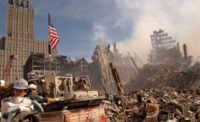New York City's Proposed Zoning Changes for Flood Zones Intended To Align With Other Rules

Interested parties have until mid-July to review proposed zoning changes to facilitate flood-resilient construction in designated flood zones in New York City. The City Planning Commission, which released the proposed zoning text amendment on May 20, will refer the proposals to 41 community boards—all of which contain flood zones—and all five borough presidents and borough planning boards for a 60-day review period, which would include public hearings.
Based on the groups' advisory recommendations, the planning commission will conduct its own review, hold a public hearing, potentially make modifications and vote on the proposals. That process usually takes one to two months. The proposals then go to the City Council as a resolution. After more hearings, there is a vote—likely some time mid-fall.
Next month, the Building Resiliency Task Force, convened by the Urban Green Council at the request of New York City Council Speaker Christine Quinn and Mayor Michael R. Bloomberg, will release its set of recommendations for changes to the city's building code—also to facilitate flood-resilient construction in flood zones. "There will be action plans and opportunities for change," says Robert D. LiMandri, New York City Dept. of Buildings (DOB) commissioner and a member of the task force's steering committee.
The task force is considering both direct effects of extreme weather on buildings, such as flooding or wind damage, and secondary effects on buildings caused by infrastructure outages like loss of electricity and water. It will also make recommendations for more-resilient infrastructure, says LiMandri. He expects the first pieces of legislation proposing building code changes to be presented to the City Council in the fall.
The proposed zoning changes are designed to enable new and existing buildings throughout designated flood zones to meet the latest federal standards for flood-resistant construction. The changes expand on Bloomberg’s emergency executive order announced on Jan. 31, which temporarily suspended height and other restrictions to allow flood-resilient reconstruction after Superstorm Sandy's surge ravaged low-lying areas last Oct. 29. The order, which will expire, must be codified by a zoning text amendment.
The proposed text amendment would eliminate conflicts between current zoning regulations and the city’s building code for buildings adhering to the Federal Emergency Management Agency’s (FEMA) flood standards by allowing limited additional flexibility for building height, placement of stairs and ramps, and location of mechanical systems and off-street parking. The proposal would also mitigate the effects of federal requirements on ground-floor activity and quality of the streetscape, according to the Dept. of City Planning.
After Hurricane Sandy, FEMA issued new, non-binding flood maps for New York City, reflecting the best available information about the city’s flood risks. The city also increased the flood elevation standards required under the building code by including an additional one or two feet of required elevation, known as “freeboard,” to code requirements.
Owners of severely damaged or destroyed buildings are required to comply with the flood-resistant construction standards of the building code when they rebuild. In addition, property owners within the newly enlarged FEMA flood zones may wish to make their buildings comply with new FEMA standards. This would reduce vulnerability to future floods as well as help to avoid higher flood-insurance premiums. However, in many instances, current zoning regulations or conflicts between zoning and building-code requirements would make it difficult or, in some cases, impossible for owners to build or retrofit to these standards, says the Dept. of City Planning.
These adjustments will “relieve conflicts” and enable owners of buildings in flood zones “to rebuild or retrofit to new flood-protection standards and help restore the same amount of living and working space they were previously permitted,” says City Planning Commissioner Amanda M. Burden in a press release.
Howard Slatkin, the Dept. of City Planning's director of sustainability, says the proposed changes are not controversial in and of themselves. "Most of the issues are embedded in FEMA standards and everything flows from that," he says. The zoning changes are trying to support people who are trying to raise their buildings, he adds.
According to Slatkin, it is difficult to generalize the cost of elevating a building because it differs depending on the building type. "FEMA talks about elevating houses on blocks off a foundation," he says. "In New York City, there are all sorts of conditions, including apartment buildings with residents on the first floor, that don't lend themselves to easy fixes," he adds.
Because the FEMA changes, especially regarding elevating buildings, have implications for stairs and other building elements that fall under the building code, and because DOB enforces the both the building and zoning codes, the DOB has been actively involved in the rezoning effort. "We've been working [with city planning] to make zoning and building codes dovetail nicely," says LiMandri.




